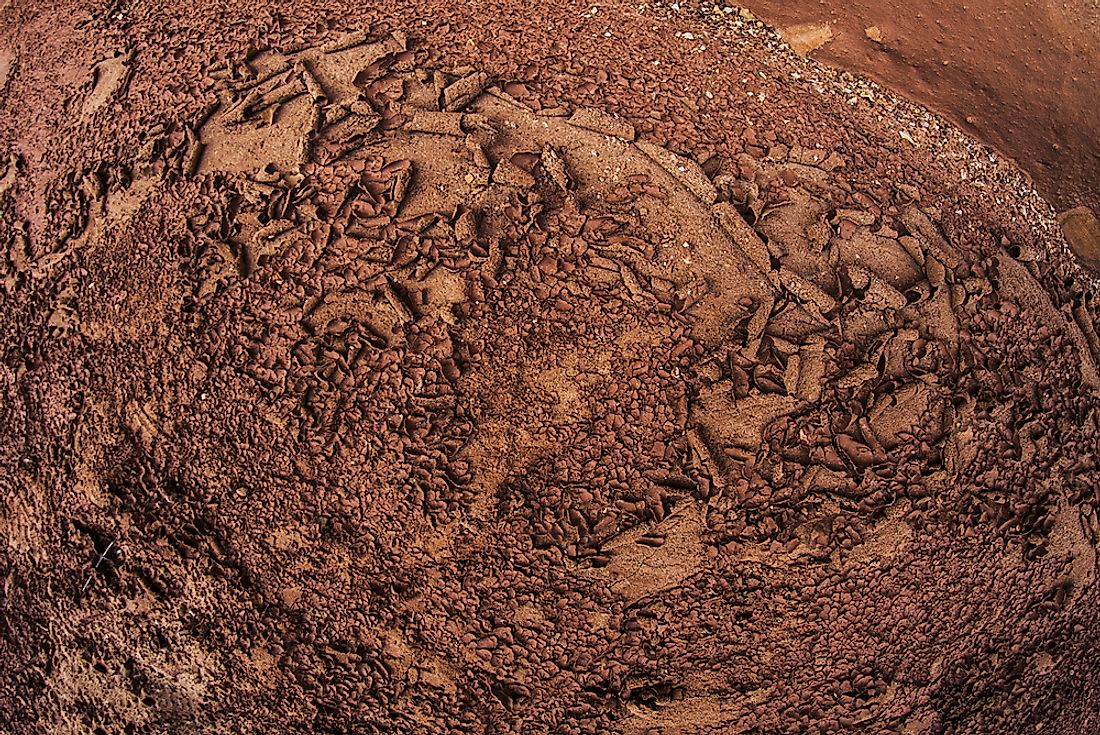What Is Alluvium?

What Is Alluvium?
Alluvium is the term used to describe sediments deposited by rivers. Rivers constantly carry sedimentary materials along their course, usually the result of erosion. The majority of these materials are picked up in areas of the river where the water runs very quickly and has more force. A river can deposit alluvium at any point along its course, although these deposits are usually concentrated in areas where the water flow is slowed down. Over its course, the sediment is changed and worn down by the flow of the water until it has a loose and almost mud-like consistency. This deposited alluvium is most commonly found where rivers empty into lakes and overflow riverbanks, forming floodplains and deltas. The floodplains and deltas are also known as alluvial plains. The entire process is referred to as alluviation.
Because this substance is made up of sand, silt, rocks, clay, and other organic matter, it is known for its fertile soils. Some of the most agricultural productive alluvium deposits in the world are found near the: Huang river, Nile river, Ganges river, and Mississippi river. Alluvium deposits have also been known to fill in small lakes over time, resulting in a geographic feature known as fertile plains. Alluvium deposits that have been left behind by melting glaciers are known as glacial till
Alluvial Soil
The fertile soil of alluvium has been of significant importance to the development of humans throughout history. For example, the fertile plains of the Nile river allowed ancient Egyptians to grow and harvest agricultural crops, which facilitated the growth of their civilization. Today, alluvium continues to play an important role in agriculture. In India, for instance, several areas are rich in alluvium, including: the Brahmaputra Valley, Punjab, West Bengal, and the coastal regions. The nutrient-dense soil in found in the alluvium deposits of these areas is perfect for cultivating crops such as rice, wheat, sugarcane, and legumes.
Geologic Age Of Alluvium
Geologists consider alluvium to be a relatively young geological formation. Most of it has been deposited during the most recent period of the current Cenozoic era. Additionally, this substance is loose and is not yet old enough to have been compacted into solid stone. Instead, it sits on top of bedrock, covering the solid stone beneath. Because of this, geologists often use the term “cover” to refer to alluvium.
Placer Deposits
In addition to the previously mentioned nutrients, alluvium deposits may also consist of valuable minerals and ore. When gold, platinum, or other precious metals and stones are found in alluvium, it is referred to as placer deposits. As rivers deposit alluvium, a gravity separation process occurs, which allows these denser valuable minerals to be deposited at certain points as well. Placer deposits are most commonly found at the bottom of waterfalls or along bends in the river, where the water slows down just enough to drop these metals and stones. Extracting placer deposits is known as placer mining, which can been conducted by utilizing both open-pit and surface excavation methods. Placer mining was the most common mining activity during the California Gold Rush in the US.











